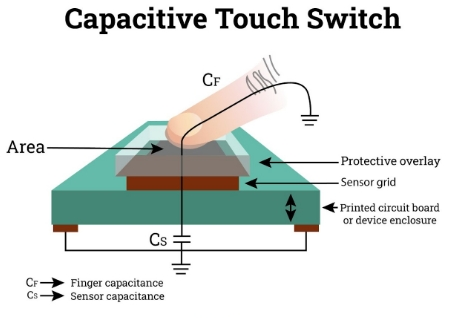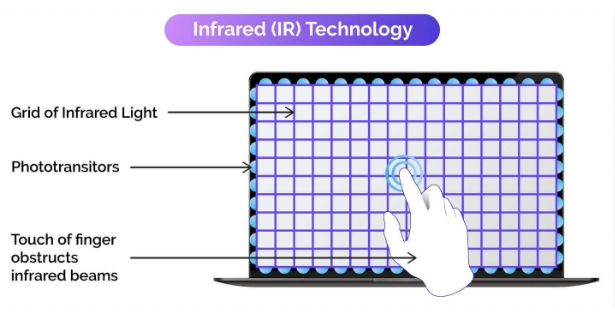There are two main touch types in the market, capactive touch and infrared touch, let's have a view of the difference between them
Capacitive touch screen operate by detecting changes in capacitance when a conductive object, such as a finger, comes into contact with the screen. This technology offers high sensitivity, allowing for precise touch input with minimal pressure. Capacitive touch screens are commonly found in smartphones, tablets, and other consumer electronics due to their responsiveness and support for multi-touch gestures. However, they may be susceptible to interference from moisture and contaminants, making them less suitable for outdoor use or harsh environments.
Infrared touch screens rely on infrared light beams to detect touch. These screens are capable of detecting touch from any object, regardless of its conductivity, making them suitable for a wide range of applications. Infrared touch screens are commonly used in public kiosks, industrial control panels, and outdoor displays due to their robust construction and tolerance to environmental factors. They offer excellent durability and resistance to scratches and physical damage, making them ideal for demanding environments.
What’s best between capacitive and infrared touch screens?
The choice between capacitive and infrared touch screens depends on the specific requirements of the touch screen interface application. Capacitive touch screens offer high sensitivity and support for multi-touch gestures, making them ideal for consumer electronics and handheld devices. However, they may be susceptible to interference from moisture and contaminants. In contrast, infrared touch screens provide robust construction, tolerance to environmental factors, and support for touch detection from any object, making them suitable for public kiosks, industrial control panels, and outdoor displays.

